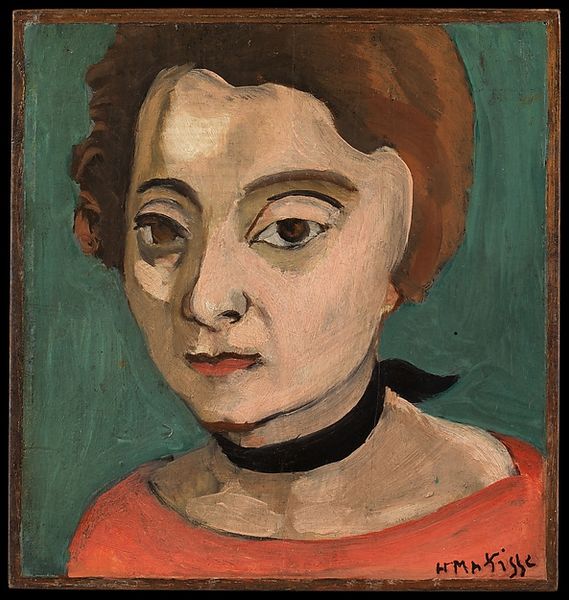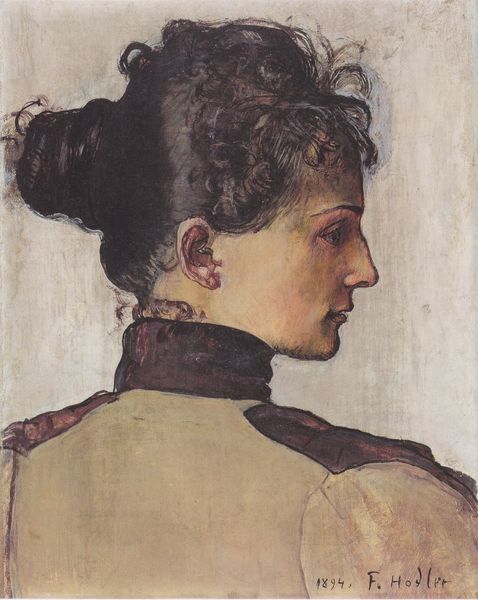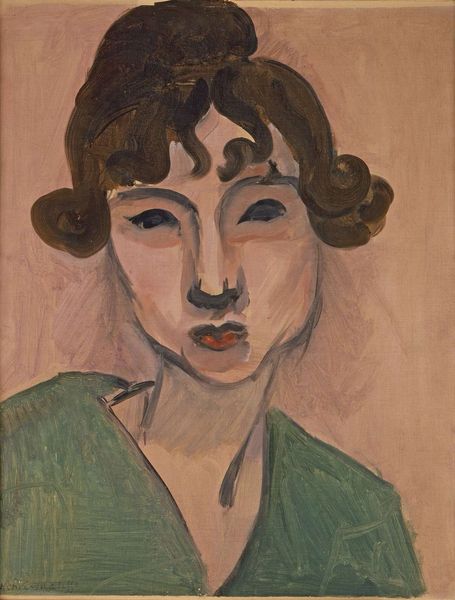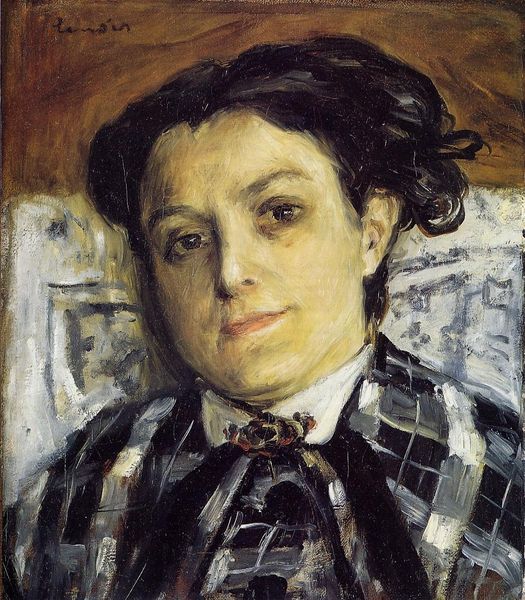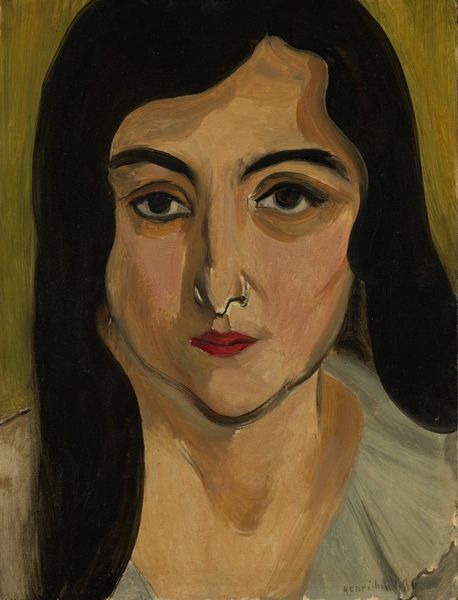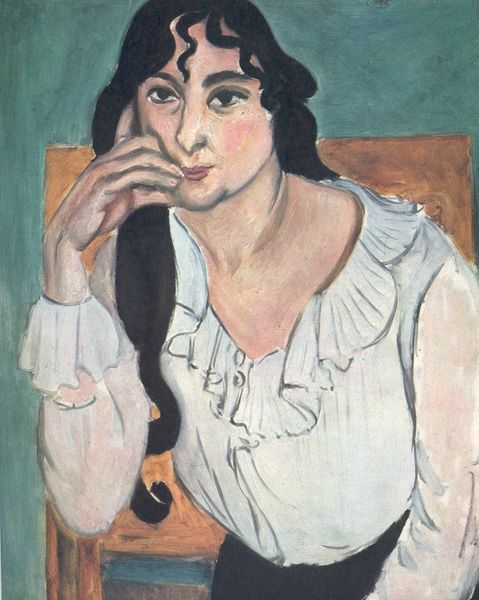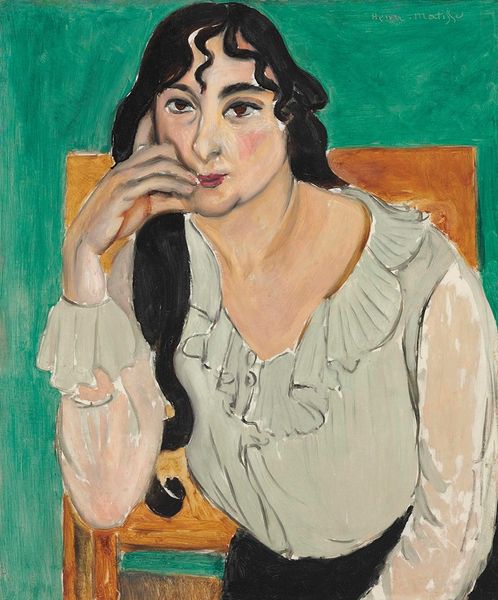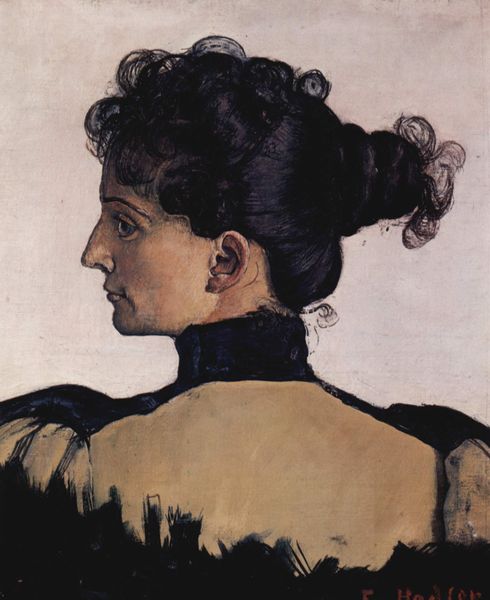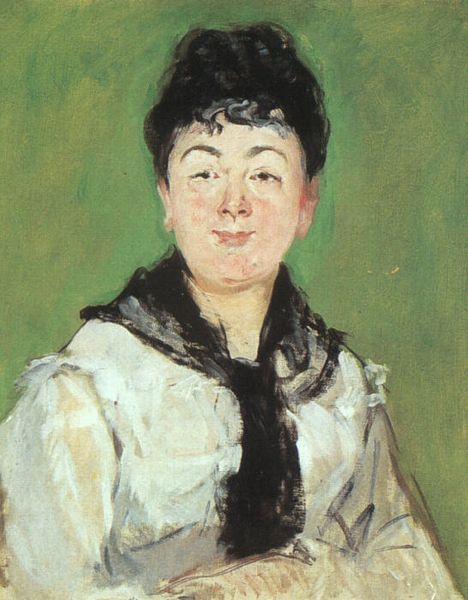
painting, oil-paint
#
portrait
#
painting
#
oil-paint
#
oil painting
#
symbolism
Dimensions: 27 x 35 cm
Copyright: Public domain
Editor: This is Ferdinand Hodler’s "Portrait of Madame de R." from 1898, created with oil paint. I find it really compelling, particularly because of its slightly unfinished quality and how the different layers of paint and possibly other materials create texture. What catches your eye when you look at this piece? Curator: The roughness you noted is key. Hodler's process wasn't about achieving an idealized, polished likeness but about the labor itself. Look at the visible underdrawing, the way he builds up layers. It draws attention to the act of painting. What do you think that signals? Editor: Perhaps a deliberate focus on the constructed nature of identity? Instead of an illusion of reality, he reveals the "making" of the portrait? Curator: Exactly. And consider the social context. This was a time of industrial expansion, rising bourgeois wealth. Hodler's almost raw, unrefined application of paint is a kind of commentary. The materiality, the "thing-ness" of the paint itself, becomes a statement against purely representational art favored by that class. This disrupts traditional class structures. Editor: So it's like he's elevating the work and materials – and perhaps also labor -- above mere representation of status? Curator: Precisely! The visible work involved, the conscious choice of materiality over pure illusion, is itself the statement. How different would the piece be had he used entirely refined techniques, concealing all labor? Editor: Significantly. Focusing on the visible work really challenges the viewer to reconsider not just who is being painted, but how and why. Curator: And for whom, we might add. A compelling tension surfaces, and our view of traditional portraiture and the classes who championed it is made a little more complex. Editor: This has really changed the way I see Hodler's choices in creating this portrait. Thank you! Curator: Indeed. Paying attention to the artist's hand, the material, the social context, opens up all kinds of exciting possibilities.
Comments
No comments
Be the first to comment and join the conversation on the ultimate creative platform.

